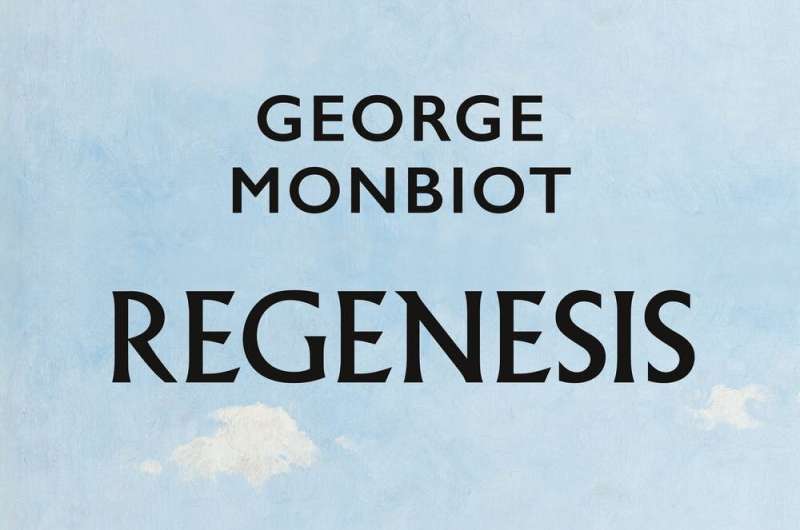
In his new e book “Regenesis,” journalist and environmental activist George Monbiot describes issues related with agriculture now and into the upcoming. He also provides illustrations of how agriculture can be enhanced to produce wholesome meals sustainably. He does this in an participating method by combining his own ordeals with an impressive understanding of the literature.
In his opening chapter, Monbiot describes digging into the soil in his orchard. He marvels at the astounding soil existence and its range, ranging from macro-organisms these kinds of as snails, earthworms and beetles, to “mesofauna” these types of as mites, nematodes, micro organism and fungi. For each group, he describes their features and interactions with other soil organisms and crops, stressing the great importance of a assorted and practical group.
The health and fitness of the soil, he emphasizes, is critical for our survival, mainly because procedures in soils regulate to a massive extent the planet higher than floor.
Monbiot observes that these types of complicated ecosystems can’t be comprehended only by learning individual factors, and he hyperlinks this perception to the menace of international warming for meals generation.
The historic change in Western eating plans from a range of crops to a several major crops (these kinds of as wheat, rice, maize and soybean) has created the “normal farm,” which grows only a several crops and needs pesticides and chemical fertilizers to manage efficiency. This has established vulnerabilities in the system, which is beholden to marketplaces and to suppliers of seeds, pesticides and fertilizers. To this can be additional the threats of drought, erosion, decline of organic make a difference, and contamination.
Monbiot describes the environmental stream of nutrition this kind of as nitrogen and phosphorus, to attract a photograph of agriculture’s romance to other techniques.
He discusses how effluent from specialised dairy, pig and hen farms containing animal excrement qualified prospects to higher nutrient loads in waterways, which in turn stimulates algal development and potential customers to the demise of other aquatic organisms—a system recognised as “eutrophication.”
This course of action is exacerbated by imported feed stocks. Other contaminants from conventional agriculture incorporate antibiotics, metals, microplastics, fertilizers, herbicides and pesticides, all of which have seeped into normal ecosystems as a consequence of the growth of agriculture.
But Monbiot understands that nutrient release from natural and organic farming is also complicated to regulate. He debunks promises that organic farming does not direct to soil and water contamination, that taking in local produce reduces greenhouse gasoline emissions, and that holistic grazing could reverse the improve in emissions more than the earlier 100 many years.
What are the possibilities?
Having drawn a bleak photo of recent disorders and the foreseeable future of soils and farming, Monbiot sets out to uncover illustrations of land administration methods that sustain and even regenerate soils and ecosystems.
In a chapter titled Fruitful, he considers the situation of Iain Tolhurst, who manages a vegetable farm that he started out on incredibly very poor, gravelly soil. Tolhurst steadily crafted up a healthier soil and now has attained yields comparable to common horticulture employing organic and natural management methods.
These incorporate using natural predators to control pests via flower banks on the edges of his fields. Tolhurst has also decreased nutrient leaching by acquiring his fields planted all through the yr with inexperienced manure crops, which serve as a nutrient source for subsequent crops. He composts wooden chips as soil modification and makes a stage of expanding a broad assortment of veggies.

Foodstuff waste and foodstuff transport are also acknowledged as considerable concerns. Monbiot notes that distributing leftover food to food items banks can only be a community alternative to the dilemma of waste, as transportation in excess of extended distances would make it uneconomical. Meals squander, he argues, could be significantly be diminished by consuming a generally plant-dependent diet program.
Urban agriculture gives a signifies of generating food locally, but as Monbiot observes it can only deliver a fraction of the food we consume since of the restricted room.
Monbiot argues we require a greater comprehending of soil fertility (or agroecology). We want to use this comprehending to enable farmers build management techniques that will improve soil fertility normally and sustainably.
But switching to alternate farming programs has its issues.
Monbiot considers the positive aspects of no-until farming for soils, but also the complications associated with it, such as the use of herbicides. He describes an alternative farming program centered on crop rotations with legumes and cereals (mostly aged varieties) and sheep or cattle grazing the leys. This procedure includes tillage, but only every single 2nd year.
Monbiot argues that perennial grain crops have many added benefits compared to annuals, mainly because they can develop and be harvested for numerous several years and have deep roots. Having said that, he acknowledges that very couple perennial grain crops are adequately studied to be developed on a greater scale.
A farm-totally free future?
Toward the conclude of “Regenesis,” Monbiot turns his attention to livestock farming and farm subsidies that, in his look at, only encourage farmers to overstock their land and increase the area for farming to the detriment of the environment.
A person of his ultimate chapters presents a eyesight of farm-cost-free food stuff manufacturing, applying microorganisms to make carbs, proteins and nutritional vitamins. This would call for less time and much less land than current foods generation. The superior electricity requirement could be met by solar and other renewable power resources.
Switching to foods produced by germs would call for a significant alter not only in creation methods, but also in purchaser preferences. It would be strongly opposed by the meat sector.
Monbiot argues that such a switch is vital to help save our natural environment, but food generated by microbes may perhaps indicate dependence on a several large producers, which would raise transport expenditures and could show to be unaffordable for poorer nations around the world. It also carries the chance of contamination.
Monbiot finishes his book with a passionate plea that we need to have to alter our sights on farming and food items and embrace new thoughts for reduced-effect foodstuff production. He argues it is time to just take again handle of the global meals system and make a new, rich, successful and, preferably, natural agriculture, as very well as a new delicacies.
In the small chapter that concludes “Regenesis,” Monbiot returns to his orchard and describes his devastation when frost destroyed the apples just in advance of harvest.
A handful of weeks afterwards, he begins planning his orchard for the up coming calendar year. The story serves as a small example of how hope can triumph about adversity. Monbiot’s hopeful message at the stop is that we will quickly get there at a stage in which matters alter.
Is regenerative farming an eco wake-up connect with?
This post is republished from The Discussion below a Inventive Commons license. Examine the first article.![]()
Citation:
Guide considers extra sustainable foods creation strategies (2022, June 23)
retrieved 25 June 2022
from https://phys.org/news/2022-06-sustainable-meals-generation-procedures.html
This doc is subject to copyright. Aside from any honest dealing for the purpose of private examine or research, no
component may possibly be reproduced without having the written authorization. The written content is supplied for info purposes only.




